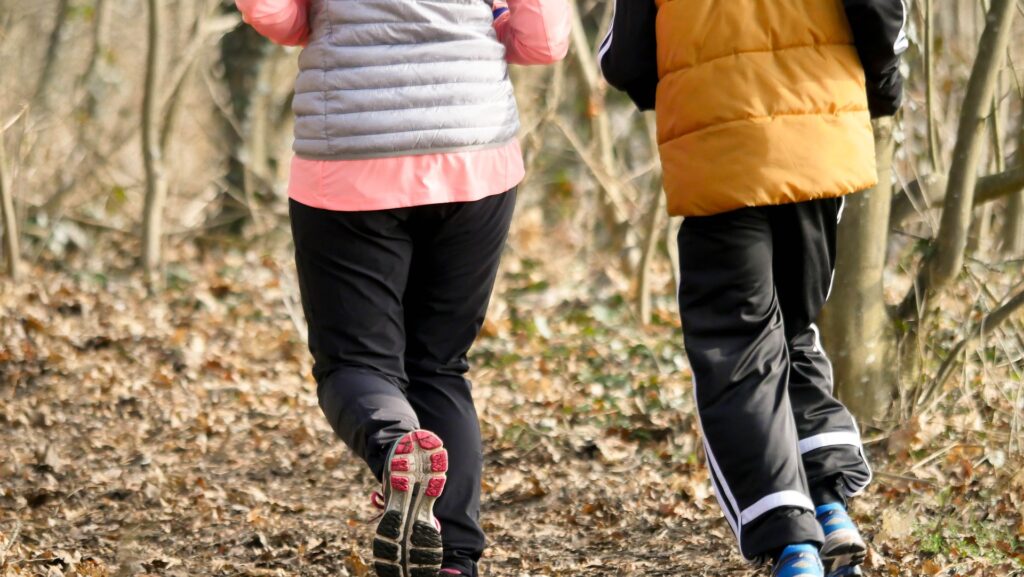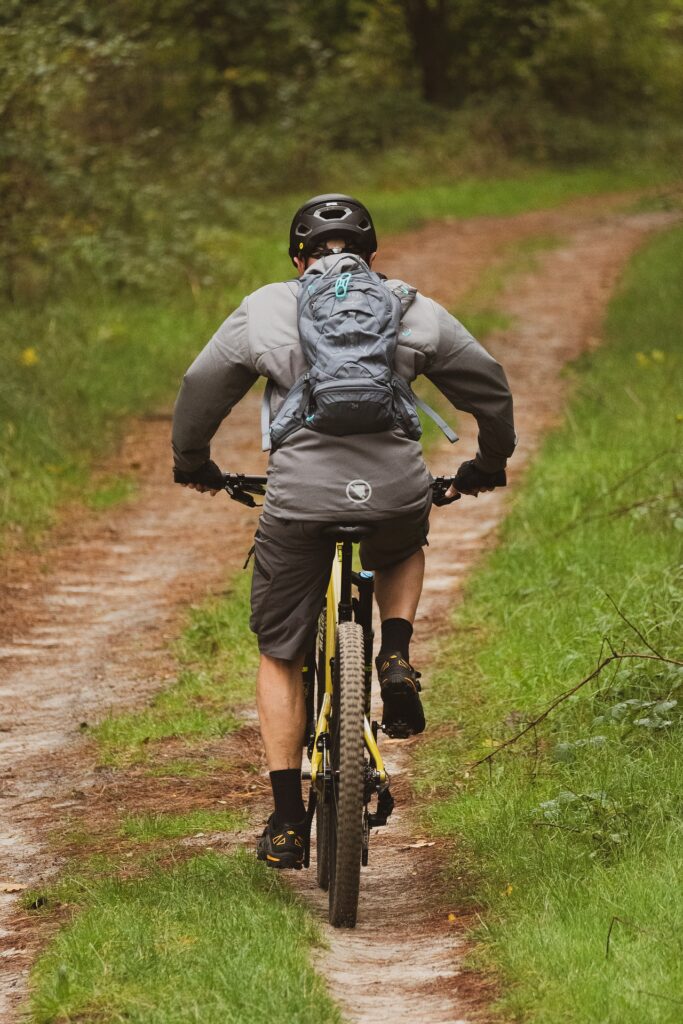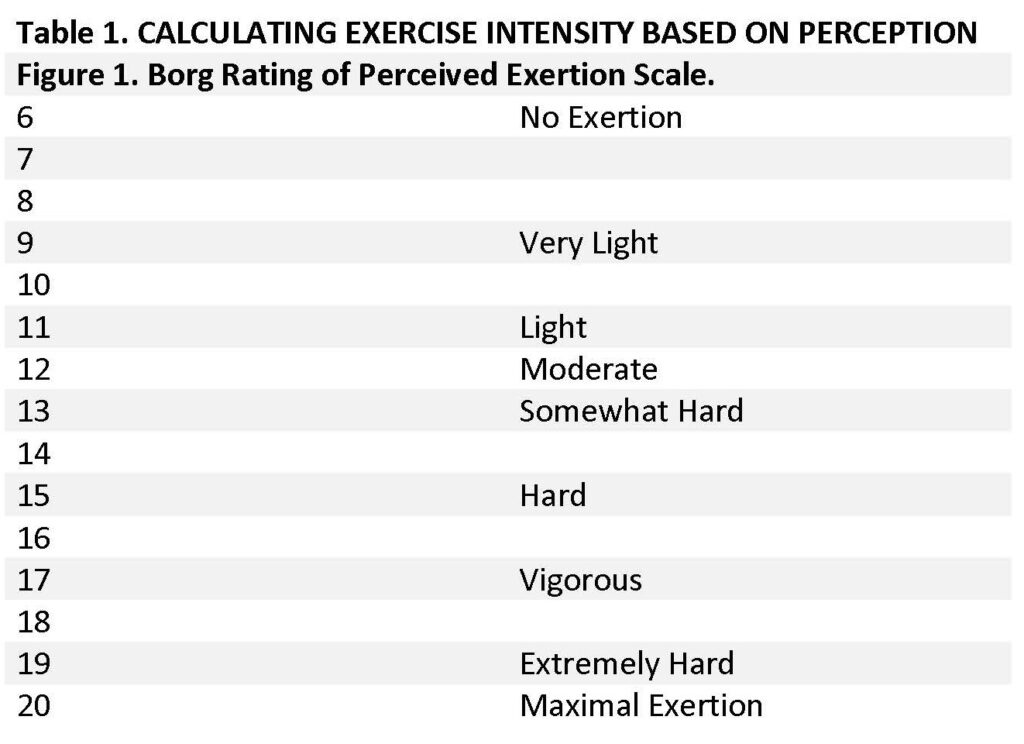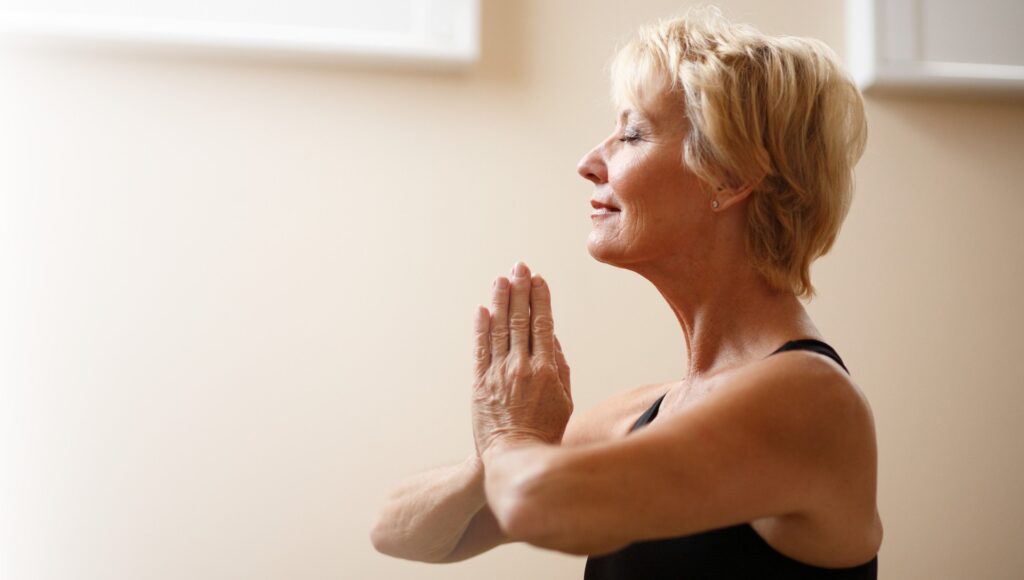By: J. Zaveri, B. Blegen, W. Martinez, R. Perry, and J. Clifford (4/22)
Quick Facts…
- The more people move the better. Doing some form of physical activity throughout the day is always better than doing none.
- To get the most health benefits, adults should partake in 150 to 300 minutes of moderate intensity physical activity per week. OR partake in 75 to 150 minutes of vigorous intensity aerobic exercise per week.
- Every type of physical activity for any duration counts.
- Adults can maintain strong and healthy muscles and heart by doing a mix of aerobic and strength exercises.
- Adults should consider their current fitness level when determining exercise intensity.
- Regular physical activity is one of the most beneficial things people can do for both mental and physical health.
Definition of Physical Activity
Physical Activity: Any bodily movement that results in an increase from resting energy expenditure.
Exercise: A form of physical activity in which planned, structured, and repetitive movement is done with the goal of increasing or maintaining physical fitness.
Physical Fitness: the ability to carry out daily tasks with vigor and alertness, without undue fatigue, and with ample energy to enjoy leisure-time pursuits and respond to emergencies
This article will focus on physical activity, whether it is a structured or unstructured activity, as long as heart rate increases, it will be considered physical activity.
Health Benefits of Physical Activity
Physical activity improves one’s ability to live healthier and longer: Regular physical activity can positively impact multiple dimensions of one’s life which can decrease the risk of developing chronic disease and improve health outcomes of those living with a chronic disease. Read more about the many ways regular physical activity can impact someone’s health.
- Improves cardiorespiratory health: Heart attacks and stroke are two of the leading causes of death in the United States. There is ample evidence that regular physical activity can reduce the risk of dying from or developing a cardiovascular disease. Regular physical activity can decrease high blood pressure, improve blood lipid profiles, and improve blood flow to muscles.
- Improves metabolic health: Type II diabetes and obesity are common health conditions Americans suffer from. Proper weight maintenance is key in reducing the risk of developing these two conditions. Regular physical activity can help people maintain a healthy weight, lose excess body weight, and maintain successful weight loss. However, in order to observe significant changes in body weight, doing more than the recommended 150 minutes of physical activity is often needed.
- Strengthens bones and muscles: Regular physical activity can help you attain or maintain strong bones and muscles. A strong musculoskeletal system can help reduce the risk of falling. According to research, regular physical activity can significantly reduce the risk of fall-induced injuries by 12%. A strong musculoskeletal system can also improve activities of daily living such as going up the stairs, carrying a child, or watering the plants.
- Strengthens the brain: Regular physical activity can help with reducing anxiety or depressive symptoms, improve sleep, and even keep your brain working sharply. Exercise is one the greatest stress relievers where the benefits can be felt immediately. Amazingly, even 10 minutes of physical activity can significantly improve your mood.
Physical Activity Guidelines
The U.S. Physical Activity Guidelines for Americans present recommendations different classes of physical activity: aerobic activity, muscle strengthening, and flexibility training. Additionally, neuromotor training helps with balance, coordination, and reflexes.
Aerobic Activities
Aerobic activities, also known as endurance or cardio exercise, are physical activities where large muscles such as legs and arms are engaged for a prolonged period of time. Walking the dog, biking to work, playing pickleball, mowing the lawn, etc. are all activities that are considered to be aerobic. Consider these next few points when organizing your aerobic activities
- Duration (How many minutes per week?): Aim for at least 150 minutes of moderate-intensity aerobic activities per week OR at least 75 minutes of vigorous-intensity aerobic activity
- Intensity: Intensity is how hard you are working, A moderate intensity activity is an activity that will raise your heart rate to 50- 70% of your maximum heart rate. Vigorous intensity is an activity that will raise your heart rate above 70% of your maximum heart rate.
- See Tables 1 and 2 for “How to determine intensity.”
- Frequency (How many days per week?): It is recommended to acquire your aerobic activity in increments of 30 minutes total, 5 days a week, equaling 150 minutes for the week. Higher frequency and lower volume (5 days/week, 30 minutes a day) is better than lower frequency and higher volume (2 days/week, 75 minutes a day).
- Example: Moderate intensity walking Monday – Friday, 10 minutes during lunch and 20 minutes after dinner = 150 minutes of moderate intensity, aerobic activity for the week.
- How to Determine Intensity: Intensity is commonly determined in two ways: 1) How intense you feel the exercise is otherwise known as your rating of perceived exertion (RPE) and/or 2) As a percentage of your estimated maximal heart rate (%MHR).
- The Borg Scale (provided in Table 1) is commonly used to indicate a person’s perception of their intensity/exertion. On this scale that ranges from 6-20, “6” indicates no exertion (lying in bed) and “20” indicates maximum intensity (running as fast as one can). Moderate intensity is an intensity is a rating between a 12-14 on the Borg scale.
- Estimated Max Heart Rate (see Table 2) assumes maximum heart rate to be one’s age subtracted from an absolute metric (220) assigned to everyone. Therefore, to estimate individual maximal heart rate, simply use the following equation: 220 – age. This equation becomes less accurate with certain populations, conditions, and individuals, so please consult with a medical professional if you are unsure about the safety of using this method to determine your intensity.
| Table 2. CALCULATING EXERCISE INTENSITY BASED ON HEART RATE |
|---|
| Moderate intensity heart rate correlates to 50-70% of maximal heart rate. The following steps will show you how to find your moderate intensity heart rate • Establish your estimated Maximal Heart Rate (MHR): MHR = 220 – your age in years • Calculate your desired intensity: MHR x desired intensity (50 – 70%) in decimal form (0.5 – 0.7) = individualized heart rate for moderate intensity exercise in beats per hour Example: Frank is 50 years old and wants to perform moderate intensity exercise at 70% of his MHR. 1. Frank’s MHR = 220 – 50 years old = 170 bpm 2. 170 (MHR) x .70 (Desired Intensity) 2. 70% of Frank’s MHR = 119 bpm NOTE: This equations is most accurate with college-age populations and tends to decrease when used with older aged individuals. Please consult with a medical professional before starting and exercise program. |
Muscle Strengthening and Endurance
Muscular Strengthening and Endurance is another form of PA that uses resistance to create muscular contractions and build skeletal muscle. Muscular Strength is how much force one can exert in one maximal effort such as when powerlifters compete. Muscular Endurance is the muscle’s ability to exert that force over an extended period of time such as with a plank or the leg muscles’ ability to run a marathon. It’s recommended every muscle group should be trained on 2-3 days per week, non-consecutively. For instance, if you train a muscle group on Wednesday, let it rest on Thursday, and you may be able to exercise that muscle group again on Friday (depending on soreness). Activities can include weight training with machines and free weights, resistance bands, and body weight resistance such as push-ups. Completion of 10-15 repetitions with every 2-3 sets is an effective build up for strength and endurance with slow progressions of increasing weight.
Flexibility
Flexibility works on improving range of motion in our joints and includes activities such as stretching. The guidelines recommend that a stretch is held at a point where mild discomfort or tightness is felt. All major muscle groups should be stretched 2-3 days per week with 10-30 second holds per joint accumulating to 60 seconds. Flexibility is best conducted when the muscles are slightly warmed-up as with a light aerobic warm up. Although there is a variety of techniques, the two common types of stretching are:
- Static stretches are those that require holding a still, single position for a period of time. These long holds can be used after a workout to help relax, rest, and decrease risk of injury.
- Dynamic stretches are movements in which the joint takes on full range of motion such as performing arm circles or walking lunges. The purpose is to take the muscles through active sequences to prepare for any physical activity.
- Check out this link for stretching recommendations
Neuromotor
Neuromotor training focuses on body stability and maintaining an equilibrium while in a still or moving position (i.e. balance, coordination, reflexes). It also provides a foundation for building postural support, physical function, and preventing falls (“functional fitness”). Neuromotor training can be achieved by limiting stability such as standing with both feet together, displacing your center of gravity as is done in yoga or tai chi, and or challenging your visual feedback by simply closing your eyes during some of the aforementioned exercises. The guidelines suggest that these exercises be performed 2-3 days a week for 20-30 minutes a session.
Strategies for Meeting the Guidelines
- Understand the need for exercise and know limitations
- Be able to answer the following question: Why is activity important for you?
- Your activity goals should be achievable and realistic. Set goals that work for you.
- Start slow, build slow. For example, take a 10 minute walk each day this week. Next week, do 15 minutes of walking each day.
- Make physical activity a daily habit.
- Activity should be up there on your priority list like brushing your teeth, eating, or bathing. Incorporating activity into your daily life will cause it to be habit forming and enjoyable.
- Find enjoyable activities.
- There is no “one size fits all”, so find the activities that are of personal enjoyment to you.
- Reduce sedentary time by replacing it with movement
- While watching TV, stretch or perform light exercise while enjoying your favorite shows.
- Gather a social group with similar interests in activity.
- Accountability buddies go a long way in supporting your success to achieving habitual movement and makes activity more fun and engaging.
- Take an exercise class.
- Sometimes what we need is for someone else to guide us.
- Incorporate physical activity practically into your daily life
- Pet owners – Take the dog on longer walks or a daily run
- Sit at a desk all day? – Try a standing desk or walk around your workspace every 30 minutes.
- Park further away from the store entrance.
- Engage with a positive attitude.
- The only way to “fail” at physical activity is by not conducting it. Any movement is better than no movement! Find what moves you!
Summary
Everyone has their own way of staying active whether that’s taking the dog for a walk or following a strict workout routine. Whatever the method, it is important to meet the physical activity guidelines by participating in a combination of aerobic, muscular strength and endurance, flexibility, and neuromotor activities. Activities should be performed as follows: aerobic activity for at least 150 minutes a week, muscular strength and endurance activities for 2 or more non-consecutive days a week, and flexibility and neuromotor activities for 2-3 times per week. All of these aspects of PA have their specific health benefits that come together to increase health span and quality of life.
References
Jeong, S. W., Kim, S. H., Kang, S. H., Kim, H. J., Yoon, C. H., Youn, T. J., & Chae, I. H. (2019). Mortality reduction with physical activity in patients with and without cardiovascular disease. European heart journal, 40(43), 3547-3555.
Tian, D., & Meng, J. (2019). Exercise for prevention and relief of cardiovascular disease: prognoses, mechanisms, and approaches. Oxidative Medicine and Cellular Longevity, 2019.
Swift, D. L., Johannsen, N. M., Lavie, C. J., Earnest, C. P., & Church, T. S. (2014). The role of exercise and physical activity in weight loss and maintenance. Progress in cardiovascular diseases, 56(4), 441-447.
Zhao, R., Bu, W., & Chen, X. (2019). The efficacy and safety of exercise for prevention of fall-related injuries in older people with different health conditions, and differing intervention protocols: a meta-analysis of randomized controlled trials. BMC geriatrics, 19(1), 1-12.
Basso, J. C., & Suzuki, W. A. (2017). The effects of acute exercise on mood, cognition, neurophysiology, and neurochemical pathways: a review. Brain Plasticity, 2(2), 127-152.
Edwards, M. K., & Loprinzi, P. D. (2018). Experimental effects of brief, single bouts of walking and meditation on mood profile in young adults. Health promotion perspectives, 8(3), 171.
Dishman, R. K., Heath, G., Schmidt, M. D., & Lee, I. M. (2021). Physical activity epidemiology. Human Kinetics. Liguori, G., & American College of Sports Medicine. (2020). ACSM’s guidelines for exercise testing and prescription. Lippincott Williams & Wilkins.
Trabelsi, K., Ammar, A., Masmoudi, L., Boukhris, O., Chtourou, H., Bouaziz, B., … & Hoekelmann, A. (2021). Globally altered sleep patterns and physical activity levels by confinement in 5056 individuals: ECLB COVID-19 international online survey.
Monteagudo, P., Cordellat, A., Roldán, A., Gómez-Cabrera, M. C., Pesce, C., & Blasco-Lafarga, C. (2021). Exploring Potential Benefits of Accumulated Multicomponent-Training in Non-Active Older Adults: From Physical Fitness to Mental Health. International Journal of Environmental Research and Public Health, 18(18), 9645
Promsri, A., Haid, T., Werner, I., & Federolf, P. (2020). Leg dominance effects on postural control when performing challenging balance exercises. Brain sciences, 10(3), 128.
*Jaya Zaveri, Brandy Beglen, and Wenceslao Martinez, Colorado State University Graduates; Rick Perry, PhD, Department of Health and Exercise Science, Instructor; Jessica Clifford, MS, RDN, Colorado State University Extension, Nutrition Specialist
CSU Extension programs are available to all without discrimination. No endorsement of products mentioned is intended nor is criticism implied of products not mentioned
Go to top of this page.









